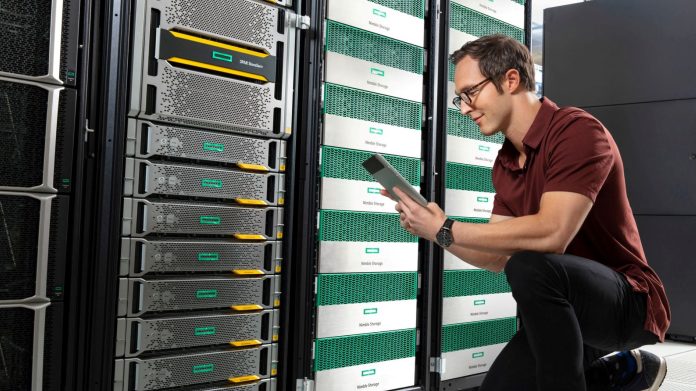In today’s digital age, data is the lifeblood of most organizations. Any interruption in data access or processing can result in significant downtime, financial losses, and damage to reputation. This is where redundancy and fault tolerance come into play in server configurations. In this blog, we will explore the importance of redundancy and fault tolerance in a rack server setup and discuss various strategies to ensure their implementation.
Understanding Redundancy and Fault Tolerance
Before diving into the strategies, it’s essential to grasp the concepts of redundancy and fault tolerance.
Redundancy: Redundancy refers to having backup components or systems in place to take over in case the primary ones fail. This redundancy can exist at various levels, from power supplies and network connections to storage and processing units.
Fault Tolerance: Fault tolerance is the ability of a system to continue functioning, even in the presence of hardware or software failures. A fault-tolerant system can automatically detect and mitigate failures without causing service disruptions.
Why Redundancy and Fault Tolerance Matter
In a rack server configuration, which typically houses multiple servers in a compact space, ensuring redundancy and fault tolerance is crucial for several reasons:
- Minimizing Downtime: Redundancy and fault tolerance mechanisms help minimize downtime by allowing systems to keep running even if certain components fail. This is especially critical for mission-critical applications and services.
- Data Integrity: Redundant storage and backup systems help maintain data integrity, preventing data loss in case of hardware failures or disasters.
- Scalability: Redundancy and fault tolerance can be designed to scale as your organization grows. This ensures that your server configuration can accommodate increased demands without compromising on reliability.
- Cost Savings: While implementing redundancy and fault tolerance may incur additional initial costs, it can lead to long-term cost savings by reducing downtime-related losses and the need for emergency repairs.
Now that we understand the importance of redundancy and fault tolerance, let’s explore strategies to ensure their implementation in a rack server configuration.
Strategies for Redundancy and Fault Tolerance
- Redundant Power SuppliesDual Power Sources: Each server in the rack should be equipped with dual power supplies connected to separate power sources. In case one source fails, the server can seamlessly switch to the other, preventing downtime.
- RAID (Redundant Array of Independent Disks)RAID Levels: Use RAID configurations to duplicate data across multiple disks. RAID levels like RAID 1 (mirroring) and RAID 5 (striping with parity) provide varying levels of redundancy and fault tolerance. This ensures data availability even if a disk fails.
- Network RedundancyMultiple Network Paths: Implement multiple network paths for data traffic. This can involve using redundant switches, routers, and network cards in servers. Network protocols like Spanning Tree Protocol (STP) can manage these paths, ensuring data continuity.
- Load BalancersLoad Balancing: Employ load balancers to distribute incoming traffic across multiple servers. If one server fails, the load balancer redirects traffic to healthy servers, ensuring uninterrupted service.
- ClusteringServer Clusters: Create server clusters where multiple servers work together to provide a service. If one server fails, the others can pick up the workload. Technologies like Windows Failover Clustering and Linux High Availability clustering facilitate this.
- Backup and Disaster RecoveryRegular Backups: Implement a robust backup strategy, including both on-site and off-site backups. Ensure backups are tested regularly to guarantee data recoverability in case of hardware failures or disasters.
- VirtualizationServer Virtualization: Utilize virtualization technologies like VMware vSphere or Microsoft Hyper-V to create virtual machines (VMs). VMs can be migrated between physical servers, providing flexibility and fault tolerance.
- Monitoring and AlertsProactive Monitoring: Set up monitoring tools to track server health and performance in real-time. Configure alerts to notify administrators of potential issues, allowing them to address problems before they lead to downtime.
- Uninterruptible Power Supplies (UPS)UPS Systems: Install UPS systems to provide temporary power during electrical outages. This ensures servers have enough time to shut down gracefully or switch to backup power sources.
- Data Center RedundancyGeographic Redundancy: Consider spreading your server resources across geographically diverse data center. This protects against regional disasters, ensuring business continuity.
- Documentation and TestingDocumentation: Maintain detailed documentation of your redundancy and fault tolerance configurations. This helps in troubleshooting and recovery.Regular Testing: Regularly test failover mechanisms and disaster recovery procedures to ensure they function as expected.
Incorporating these strategies into your rack server configuration requires careful planning and investment. However, the benefits in terms of increased uptime, data integrity, and overall system reliability make it a worthwhile endeavor.
Conclusion
In today’s digital landscape, ensuring redundancy and fault tolerance in a rack server configuration is not optional but a necessity. Downtime and data loss can have severe consequences for businesses, making it imperative to implement strategies like redundant power supplies, RAID, network redundancy, load balancing, clustering, and robust backup and disaster recovery plans.
Remember that redundancy and fault tolerance are not one-size-fits-all solutions. The specific strategies you choose should align with your organization’s needs, budget, and risk tolerance. By prioritizing these measures, you can build a resilient server infrastructure that minimizes disruptions and safeguards your critical data and services.


